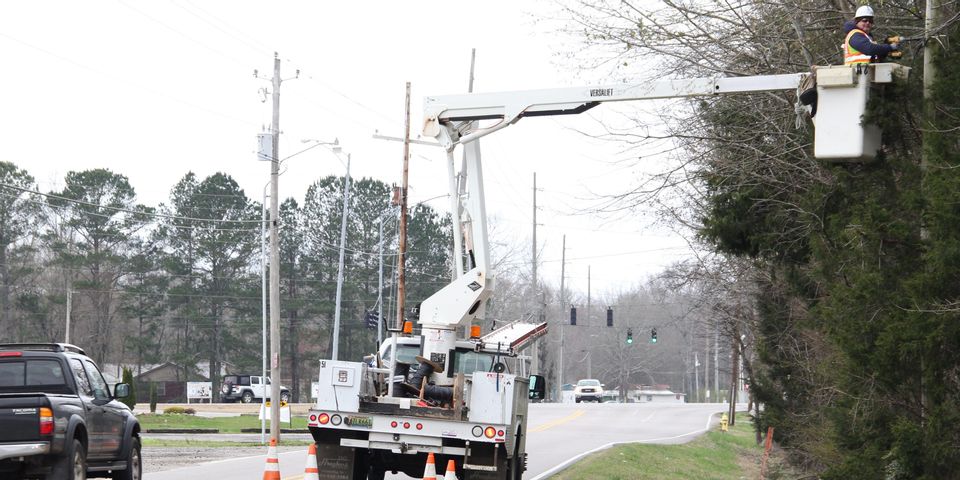
Utility workers now included in the Move Over law
Sometimes, workers can feel the breeze on their faces as a vehicle speeds through a work zone. That’s too close for comfort, says Dave Ramski, engineering manager at NHTC. He oversees the crews that often work alongside the area’s highways.
The risks go through a lineman’s mind when working on the side of the highway. “It’s dangerous,” he says. “If drivers take their eyes off the road for just a couple of seconds, whether it’s texting or using the radio, it’s a dangerous situation.”
When vehicles do not slow down in a work zone, the drivers often appear to be distracted, Ramski says. To make its trucks more visible, NHTC installed amber flashing lights.
Follow the law
Now, Alabama has added utility vehicles such as NHTC work trucks to the state’s Move Over law. When Alabama adopted the law in 2006, it applied to emergency vehicles with blue or red flashing lights. The state added any vehicle with flashing amber lights last year. Drivers are required to move over when possible and slow down when they see these vehicles.
In rural areas, it’s not always possible to move over, says Curtis Summerville, public information officer for the Huntsville district of the Alabama Law Enforcement Agency.
If drivers cannot move over, they must slow down if they see utility crews or other emergency crews with flashing lights alongside the roadway. “They’re required to get over if it’s safe,” Summerville says.
If the speed limit is above 30 mph, speed must be reduced by at least 15 mph below the speed limit. For speed limits of 30 mph or less, drivers must reduce their speed by 5 mph.
“This is important for the safety of our utility workers and other emergency workers such as law enforcement and emergency responders,” Summerville says.
Source: May/June 2019 issue of “The Communicator” which is produced for NHTC by WordSouth. Click here to access full issues of NHTC’s “The Communicator” magazine.
About the Business
Have a question? Ask the experts!
Send your question

